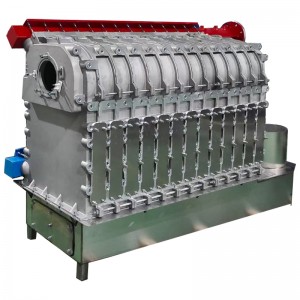- Afrikaans
- Albanian
- Amharic
- Arabic
- Armenian
- Azerbaijani
- Basque
- Belarusian
- Bengali
- Bosnian
- Bulgarian
- Catalan
- Cebuano
- China
- China (Taiwan)
- Corsican
- Croatian
- Czech
- Danish
- Dutch
- English
- Esperanto
- Estonian
- Finnish
- French
- Frisian
- Galician
- Georgian
- German
- Greek
- Gujarati
- Haitian Creole
- hausa
- hawaiian
- Hebrew
- Hindi
- Miao
- Hungarian
- Icelandic
- igbo
- Indonesian
- irish
- Italian
- Japanese
- Javanese
- Kannada
- kazakh
- Khmer
- Rwandese
- Korean
- Kurdish
- Kyrgyz
- Lao
- Latin
- Latvian
- Lithuanian
- Luxembourgish
- Macedonian
- Malgashi
- Malay
- Malayalam
- Maltese
- Maori
- Marathi
- Mongolian
- Myanmar
- Nepali
- Norwegian
- Norwegian
- Occitan
- Pashto
- Persian
- Polish
- Portuguese
- Punjabi
- Romanian
- Russian
- Samoan
- Scottish Gaelic
- Serbian
- Sesotho
- Shona
- Sindhi
- Sinhala
- Slovak
- Slovenian
- Somali
- Spanish
- Sundanese
- Swahili
- Swedish
- Tagalog
- Tajik
- Tamil
- Tatar
- Telugu
- Thai
- Turkish
- Turkmen
- Ukrainian
- Urdu
- Uighur
- Uzbek
- Vietnamese
- Welsh
- Bantu
- Yiddish
- Yoruba
- Zulu
Aug . 06, 2024 06:11 Back to list
Exporter of Ductile Iron Pipe Mold Bottom Rings for Efficient Industrial Applications and Solutions
The Role and Importance of Ductile Iron Pipe Mold Bottom Rings in Global Export
Ductile iron pipes have become an essential component in modern infrastructure, especially for water and wastewater applications. Among the various components that contribute to the manufacturing and functionality of ductile iron pipes, the bottom ring of the mold is a critical element often overlooked. As the global demand for reliable and durable piping systems grows, the role of ductile iron pipe mold bottom ring exporters becomes increasingly significant.
Understanding Ductile Iron Pipe Mold Bottom Rings
Ductile iron pipe mold bottom rings are specialized components used in the casting process of ductile iron pipes. These bottom rings serve as the foundation for the mold, ensuring that the molten iron is contained during the pouring process. The quality and design of these bottom rings directly influence the overall integrity and longevity of the finished pipes. By providing structural support, they help maintain the shape of the mold, contributing to the uniformity and strength of the pipes produced.
The Export Market for Ductile Iron Pipe Components
The export market for ductile iron pipe mold bottom rings is vibrant and expanding. Countries with advanced manufacturing capabilities are exporting these components to regions where water supply and wastewater management infrastructure is being developed or upgraded. Demand for such components often coincides with governmental initiatives aimed at improving public utilities, and the growing need for robust infrastructure in developing nations.
Exporters specializing in ductile iron pipe mold bottom rings are not merely shipping products; they are offering solutions that enable manufacturers to produce high-quality pipes more efficiently
. This is particularly important in regions experiencing rapid urbanization and population growth, where reliable water supply systems are a necessity.Quality Standards and Compliance
ductile iron pipe mold bottom ring exporter

One of the most crucial aspects of exporting ductile iron pipe mold bottom rings is adherence to international quality standards. Exporters must ensure that their products meet the stringent requirements set forth by various regulatory bodies, such as ASTM (American Society for Testing and Materials) and ISO (International Organization for Standardization). Meeting these standards is essential not only for the safety and reliability of the pipes but also for maintaining a competitive edge in the global market.
Moreover, engaging in continuous research and development is vital for exporters. Innovations in materials and manufacturing processes can lead to enhanced durability and performance of bottom rings, which in turn can improve the overall quality of ductile iron pipes and streamline production processes for manufacturers.
Challenges in the Export Landscape
Despite the promising outlook, ductile iron pipe mold bottom ring exporters face several challenges. Fluctuating raw material prices, trade tariffs, and changing regulations can impact profitability and operational efficiency. Additionally, building and maintaining strong relationships with overseas manufacturers is crucial; language barriers, cultural differences, and distance can complicate communication and logistics.
To overcome these challenges, successful exporters often invest in building robust international partnerships and leveraging technology for efficient supply chain management. Establishing a reliable network of clients and understanding the specific needs of different markets can help exporters tailor their products and services more effectively.
Conclusion
Ductile iron pipe mold bottom rings play an overlooked yet pivotal role in the manufacturing of ductile iron pipes, which are essential for modern infrastructure. As the global market continues to expand, the importance of ductile iron pipe mold bottom ring exporters cannot be understated. By adhering to quality standards, fostering innovation, and navigating the complexities of international trade, these exporters are not only supporting the infrastructure needs of communities worldwide but also securing their place in a competitive marketplace.
-
8mm Thin-Walled Cast Steel Manhole Cover Pallet Bottom Ring | Durable
NewsAug.04,2025
-
Premium Cast Iron Water Main Pipe: Durable, Corrosion-Resistant
NewsAug.03,2025
-
Durable Cast Iron Water Mains | AI-Optimized Systems
NewsAug.02,2025
-
High-Efficiency Propane Boiler for Baseboard Heat | Save Energy
NewsAug.01,2025
-
Premium Source Suppliers for Various Gray Iron Castings
NewsJul.31,2025
-
Durable Cast Iron Water Main Pipes | Long-Lasting
NewsJul.31,2025


